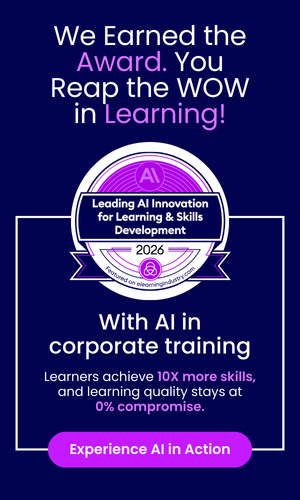In Baghdad during Ramadan, a centuries-old street game called mheibes draws roaring crowds and master strategists. Forty men stand in a line, one secretly holding a ring in their clenched fist. Across from them stands a single man – the "guesser" – whose task is to pick out the ring bearer by observing subtle twitches, nervous shifts, or the faintest hesitation. There's no dialogue. No questions. Just pure, silent observation.
In the TV show Lie to Me, Dr. Cal Lightman solves crimes by decoding micro-expressions – those lightning-fast facial flickers that betray what someone’s really feeling. It's dramatized, yes, but rooted in real science, particularly the work of Dr. Paul Ekman and former FBI agent Joe Navarro, a world expert in nonverbal communication.
→ Subscribe Newsletter: The Rapid Training Energizer
These two worlds – the sweaty intensity of mheibes and the polished psychology of Lie to Me – share a single truth: the body speaks even when the mouth lies. And the people who learn to listen to the unspoken consistently outperform those who don’t.
For L&D leaders, this opens a compelling door: what if we could teach observational intelligence across our organizations? What if we could scale the skill of "noticing" like we teach negotiation or Excel?

Let’s break down why this matters, how to teach it, how to make AI your co-trainer – and how to do it ethically.
Table Of Contents
- What are Nonverbal Communication Skills?
- Why Observational Intelligence Matters
- A Structured Learning Path: The Navarro-Inspired Framework
- AI: The Perfect Partner for Behavioral Training
- The Best Leaders Don’t Just Talk. They Watch.
What are Nonverbal Communication Skills?
Nonverbal communication skills refer to the ability to send and interpret messages through actions, expressions, and tone, rather than spoken words.
Why Observational Intelligence Matters
Observational intelligence is the ability to decode nonverbal communication, detect unspoken emotions, and use that information to make better decisions in real time. Navarro emphasizes this is not a superpower. It’s a skill anyone can learn.
In business, it's a skill with massive ROI:
- In sales, it helps reps read buyer hesitation before it becomes an objection.
- In hiring, it allows interviewers to detect discomfort or overcompensation.
- In leadership, it helps managers identify disengagement, anxiety, or resistance that words don’t reveal.
You don’t need a psychology degree to master this. What you need is structured practice and a system for learning to observe with intention.
Discover the 7 Habits of Highly Effective L&D Managers
But First: What About Ethics?
Before diving deeper, it’s worth asking: Does teaching people to read others so closely violate privacy or cross ethical lines?
It’s a valid concern – especially when AI is involved.
Observational Intelligence with AI
Artificial intelligence can play a critical role in teaching observational intelligence by offering personalized feedback, scalable simulations, and real-time analysis. But doing that ethically is important – consent, privacy, and data security are non-negotiable.
The answer lies in intent and transparency:
Observation is not manipulation
The goal is to better understand, not to control or exploit. Reading someone’s discomfort so you can change your pitch or offer empathy is different from using cues to corner them into a decision.
Context matters
Using these skills in a feedback conversation to support someone is ethical; using them to emotionally pressure someone into a deal is not.
AI usage must be transparent
If AI tools are analyzing interviews or calls, stakeholders must be informed. Consent, privacy, and data security are non-negotiable.
In fact, ethical observation can strengthen trust – because it enables leaders and team members to respond more humanely, not just more efficiently.
A Structured Learning Path: The Navarro-Inspired Framework
Here’s how a Navarro-style observational intelligence program could be structured for three core roles: salespeople, hiring managers, and team leaders.
Phase 1: Awareness and Baselines
- Goal: Shift from passive seeing to active observing.
- Tools: Paul Ekman’s METT (Micro-expression Training Tool), video case studies.
- Concepts: Comfort vs discomfort; baseline behavior; timing matters.
- Activities: Watch muted interview clips and identify emotional states. Pause team meetings or demo recordings and note posture or fidgeting.
Phase 2: Behavioral Cues and Patterns
- Goal: Recognize stress behaviors, pacifiers, and body language shifts.
- Tools: AI-analyzed video simulations; role-play with feedback.
- Concepts: Clusters over single cues; foot and hand movements; pacifying behavior (neck rubbing, lip compression).
- Activities: ‘Two truths and a lie’ game, video review of mock interviews or client meetings.
Phase 3: Field Application with Feedback Loops
- Goal: Apply skills in real-world interactions with immediate coaching.
- Tools: AI-assisted call review tools (e.g., Retorio, RealEyes); journaling prompts.
- Concepts: Observation-response connection; using discomfort signals to pause, probe, or pivot.
- Activities: Upload sales or feedback conversations for AI to flag tone shifts, hesitation, or posture changes. Use GPT-based journaling assistant to analyze daily interactions.
Translating Navarro's Principles into Practice
Here are a few foundational principles from Joe Navarro and how they apply:
|
Principle |
Application |
|
Comfort = trust |
In team meetings, relaxed posture and nodding indicate psychological safety. |
|
Discomfort signals resistance |
Neck touching, fidgeting, or lip compression during interviews or pricing reveals stress. |
|
Baseline first |
Before interpreting any signal, understand how the person behaves when relaxed. |
|
Timing is everything |
Look for changes in behavior after a key question, not before. |
|
Clusters matter |
Don't judge a person based on a single cue. Look for patterns across body, face, and voice. |
When managers and HR professionals use these insights, they stop relying only on words. They gain access to a deeper layer of data: what people really feel but don’t say.
AI: The Perfect Partner for Behavioral Training
Artificial intelligence can play a critical role in teaching observational intelligence by offering personalized feedback, scalable simulations, and real-time analysis.
Here are ways to embed AI:
- Micro-expression Feedback: Learners use webcam-based AI tools that flash emotional expressions for milliseconds, then test recognition accuracy.
- Call Analysis Tools: Upload real sales or interview calls; AI highlights moments of tone shift, vocal stress, or unnatural pacing.
- Adaptive Simulations: Use GPT-powered avatars that change behavior in real-time based on the learner’s responses – e.g., a nervous buyer becoming more closed off after a pricing pitch.
- Journaling & Reflection Bots: AI prompts learners to reflect on what they noticed, then gives feedback and coaching.
This transforms passive learning into a dynamic feedback-rich loop – the same way great observational learners (such as Navarro or elite salespeople) evolve through trial, error, and reflection.

Use Cases Across Functions
Sales Teams
- Detect false positives (smiling buyers who won’t sign).
- Adjust closing approach based on stress signals.
- Improve objection handling by sensing what’s left unsaid.
Hiring Managers
- Read over-rehearsed vs. authentic responses.
- Sense hesitation or internal conflict on key questions.
- Prevent mis-hires by noticing gaps between words and expressions.
Team Leaders
- Catch silent disengagement early.
- Adapt feedback delivery to emotional cues.
- Use observation as a coaching tool, not just a diagnostic one.
Final Thought: The Best Leaders Don’t Just Talk. They Watch.
In a world where everyone is focused on what to say, the advantage will go to those who know what to see. Nonverbal communication skill isn’t just a sales hack or HR trick. It’s the foundation of emotional intelligence, trust, and adaptive leadership.

Joe Navarro’s teachings remind us that humans have been communicating without words far longer than with them. In today’s high-speed, remote-heavy, AI-augmented world, going back to that ancient skill – and enhancing it with modern tools – may be the most future-proof move an L&D leader can make. And when used ethically – with consent, purpose, and empathy – it becomes more than just a skill.






